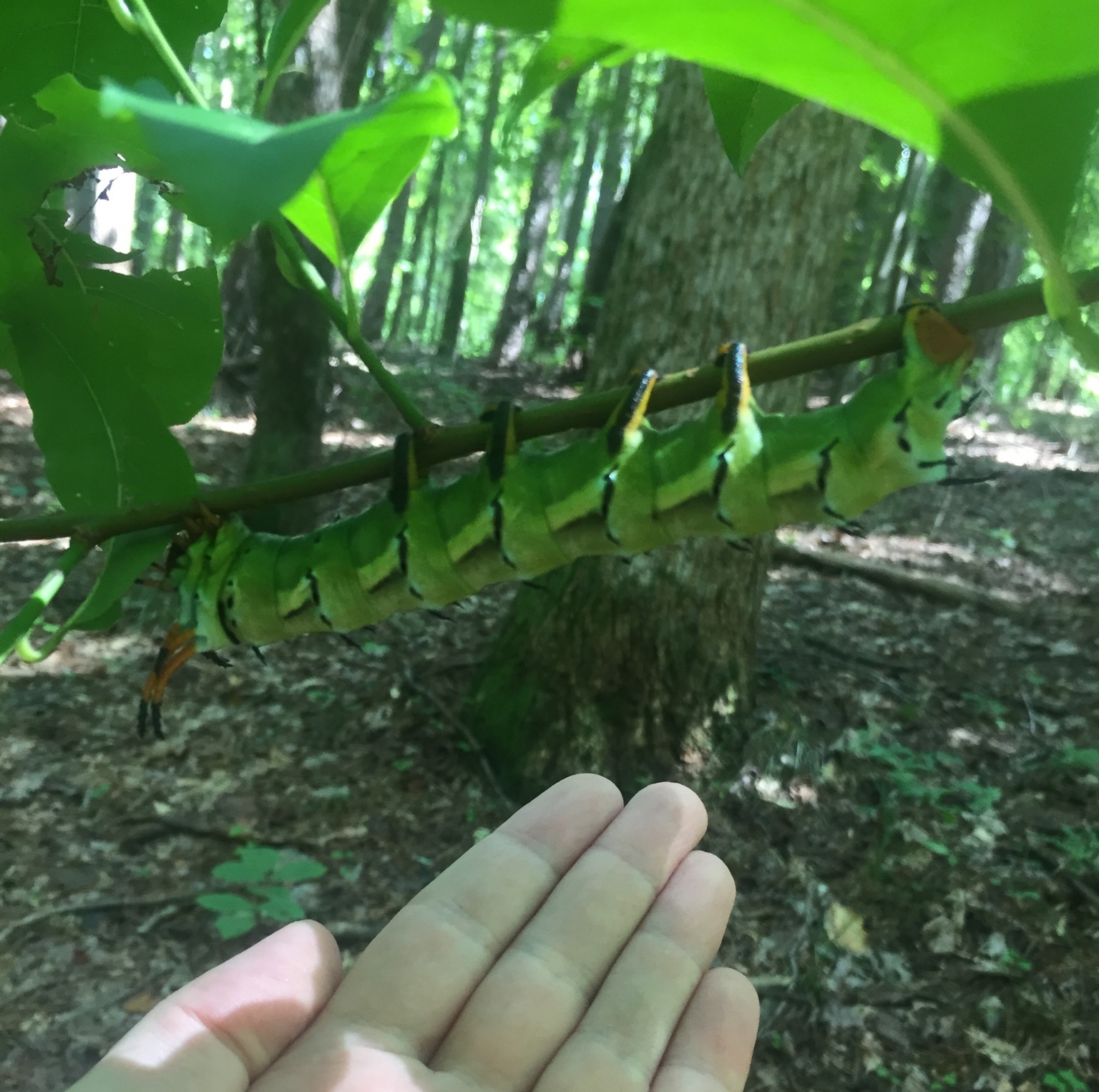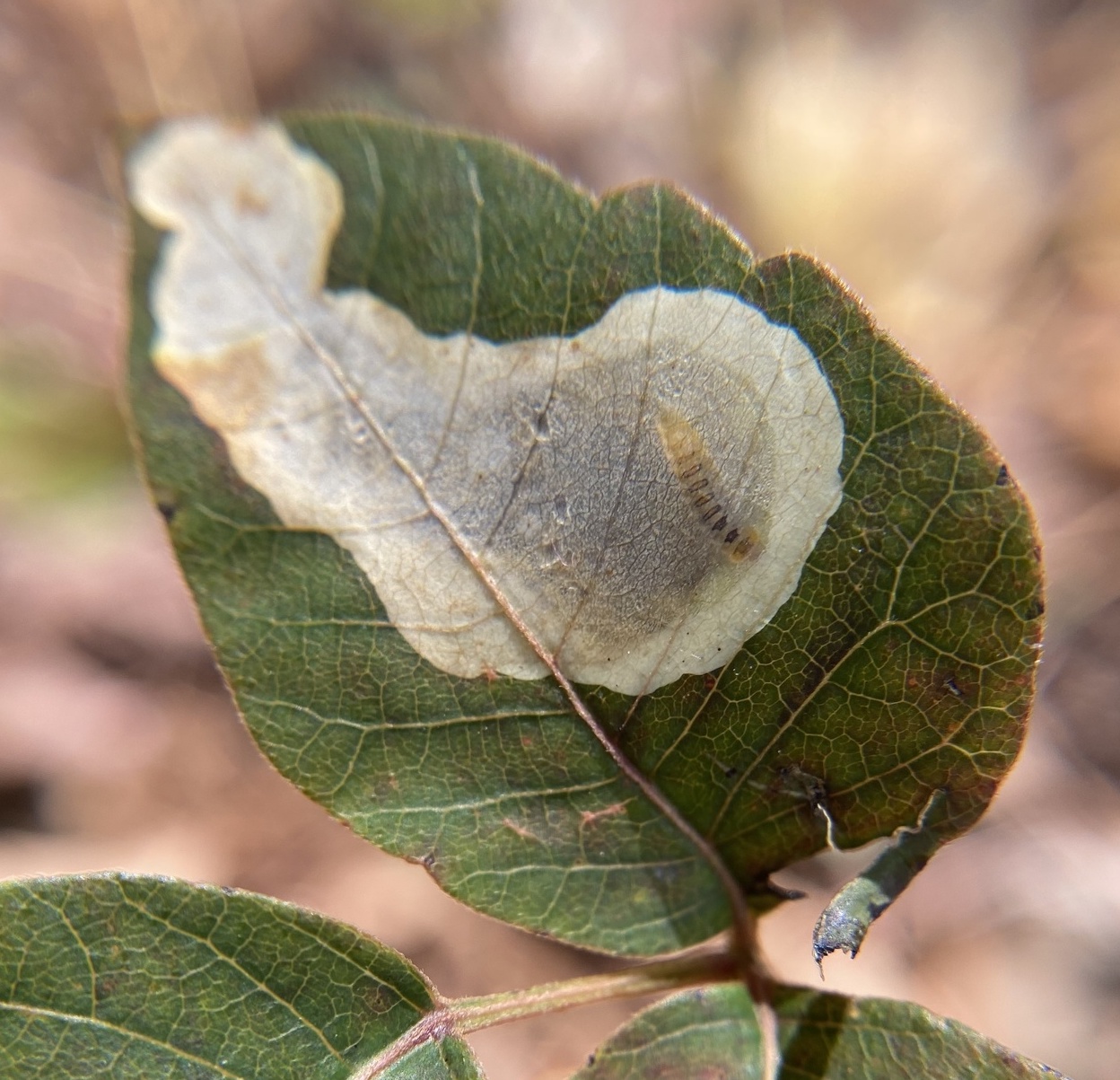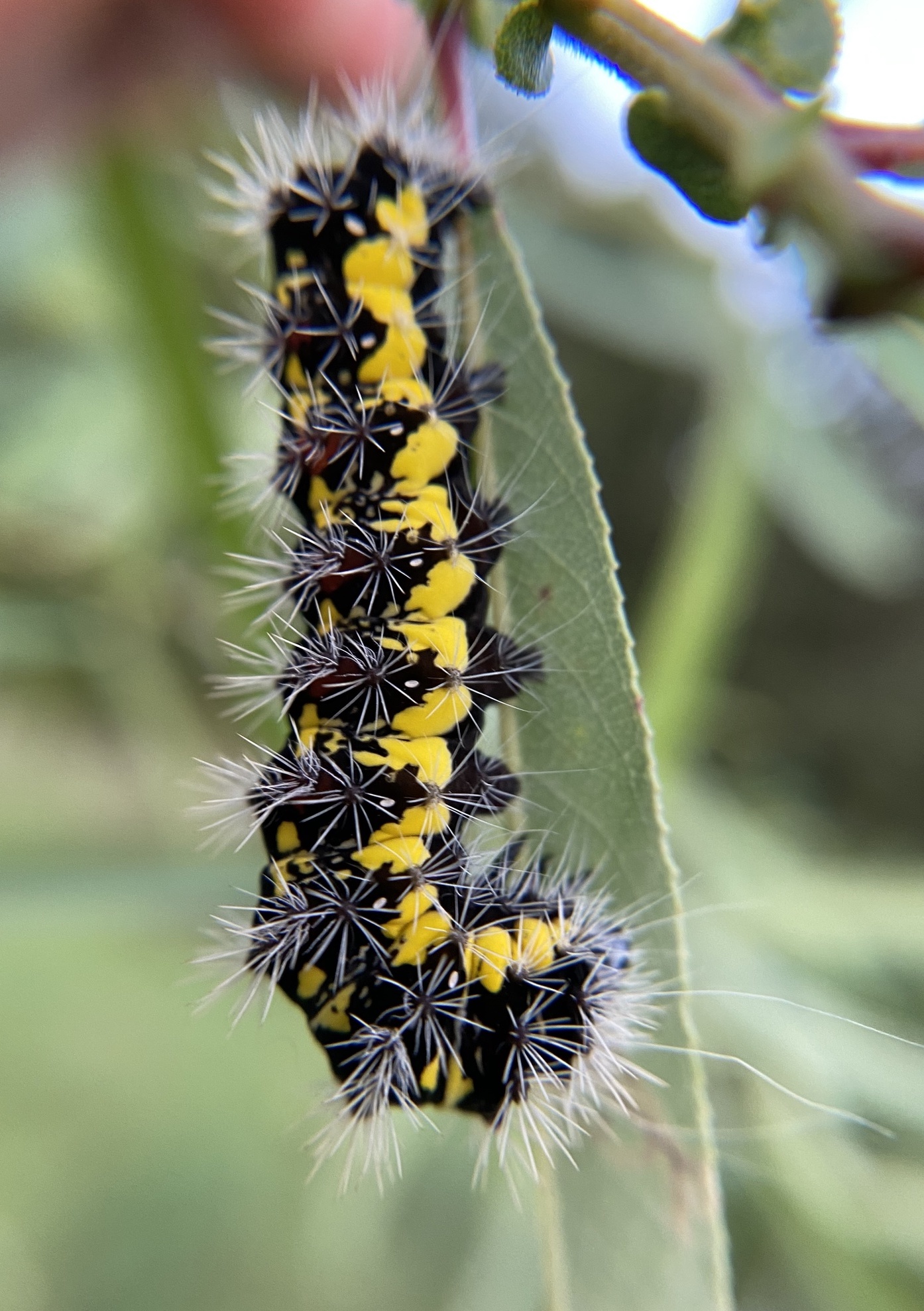Hunting for Caterpillars (and their hosts)
Nothing against butterflies, but moths are seriously underrated. Butterflies are but a strange, wonderful, and relatively small evolutionary branch of Lepidoptera, an order which is primarily made up of moths. Just look at our species totals for North Carolina: 178 species of butterflies and nearly 3,000 species of moths. We are continuously adding new moth species to the state list (the true moth biodiversity may be closer to 4,000 species), while the butterfly checklist remains static. Compared with butterflies, moths have received relatively little attention from the public or the scientific community, particularly when it comes to the micromoths and moth life histories.

I have been fascinated by moths for as long as I can remember, but in recent years this has become something of an obsession. It began with monitoring the moths that showed up around my porch light, and progressed to bigger, more powerful lights and late nights around the collecting sheet. While this will never get old, my interest has increasingly turned towards documenting the larvae of these creatures. I can put a specific date to this shift: September 4, 2018, the day I saw a hotdog-sized Hickory Horned Devil (Citheronia regalis) at William B. Umstead State Park. This remains by far the largest caterpillar I have ever encountered. In the coming years, I plan to focus my research efforts on the life histories of North Carolina’s moth species, particularly foodplant associations.
My initial efforts have been to create a list of potential host plants for all of our nearly 3,000 species, a somewhat tedious task that has taken almost a year and resulted in a database with over 18,000 entries. The most time-consuming part of this project has been sifting through the literature to find host plant records. While the HOSTS database is an excellent resource, it includes many records which are erroneous or dubious, and unhelpfully does not list the sources for its data, making it impossible to evaluate the credibility of these records.
While I now have an extensive list of potential host plants for the moth species found in North Carolina, determining which plants are actually being used in our state is a far more difficult undertaking. Many of the recorded host plants come from ex ova rearing - in other words, caterpillars reared from eggs laid by captive females. The larvae were then offered an assortment of foliage and whatever they ended up eating was recorded as a host. This resulted in a suspicious number of moths feeding on things like lettuce and clover. Unsurprisingly, caterpillars given no other choice will eat plants they would never eat in the wild.
Figuring out which hosts are being used in nature is quite difficult and time consuming. Among the leading researchers in this field are David Wagner and Charlie Eiseman (for leaf-mining moths). I highly recommend Wagner’s Caterpillars of Eastern North America, and Eiseman’s exhaustive (2,380 page) Leafminers of North America. One can have far more confidence in Wagner and Eiseman’s host plant records than for those from the historical literature, but most of these records are not specific to North Carolina. Moth caterpillars are known to show regional preferences, so a species found only on oak in the northeast (where both Wagner and Eiseman are based) may eat hickory in the southeast.

So what do we already know? Of the 2,903 species of moths that have so far been recorded in North Carolina, I was unable to find any host plant information for 566 species (or nearly 20%). And many other species had only vague records like “grasses” or “oak.” Much work has already been done in the state, with at least one confirmed host for 370 different species. Over half of these species are leaf-miners, a testament of the work in recent years of Jim Petranka, Tracy Feldman, and others. This leaves 87% of all North Carolina moths with no recorded host plant. Clearly, there is a great deal of work which remains to be done.
As I have found out, in order to add new host plant records, you not only need to be able to identify the caterpillars (which is difficult enough) but also the plants, something I am still trying to figure out. Sure I can (usually) tell when I am looking at an oak, but did you know that we have 32 species of oaks in North Carolina? And good luck telling apart the more than 30 species of hawthorn (Crataegus) or the untold numbers of grasses and sedges. I have been spending a good deal of time at the NC Botanical Garden, where everything is helpfully labeled.
Of great help in my host plant research has been Stephen Dunn. At last count, he had added 193 species of native plants to his property in Hillsborough, though this was a few months ago, so he has probably exceeded 200 by now! And this is in addition to all the oaks, hickories, and other natives that were already found on the property. Already we have had several notable findings at what we are half-jokingly referring to as the Dunn Entomological Research Preserve (DERP), including:

- Smeared Dagger (Acronicta oblinata) on Salix caroliniana - county record
- Walnut Sphinx (Amorpha juglandis) on Carya sp.
- Polyphemus Moth (Antheraea polyphemus) on Ulmus alata
- Saddled Prominent (Cecrita guttivata) - parasitized and guarding the parasitoid wasp larvae
- Laugher Moth (Charadra deridens) on Ulmus sp.
- White-dotted Groundling (Condica videns) on Symphotrichium pilosum - county record
- Angus’s Datana (Datana angusii) on Carya sp.
- White Furcula (Furcula borealis) on Prunus serotina
- Crowned Slug Moth (Isa textula) on Quercus phellos
- Double-lined Prominent (Lochmaeus bilineata) on Ulmus sp.
- Double-toothed Prominent (Nerice bidentata) on Ulmus americana
- Definite Tussock Moth (Orgyia definita) on Salix caroliniana
So why are host plant records important? Caterpillars are primary herbivores in many ecosystems, converting plant biomass into energy usable by birds and other animals. The recent apparent declines in the populations of moths and other insects may thus bring about the silent spring Rachel Carson warned us about more than 60 years ago. We cannot hope to conserve our state’s unique habitats without understanding the foundations of their food webs. And with so many moth/host plant relationships still unknown, our understanding is far from complete.
So be on the lookout for caterpillars, and when you find one, do your best to determine what it is eating. Also, take a picture and submit it to the Moths of North Carolina website, whether you know the host plant or not. I look forward to seeing what you find!